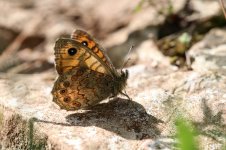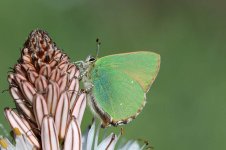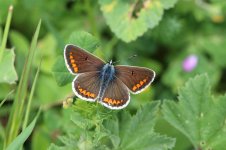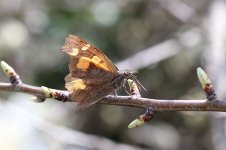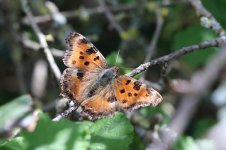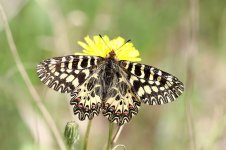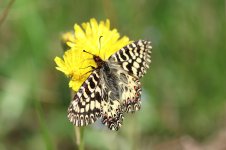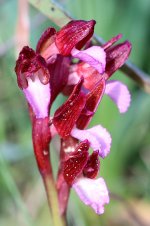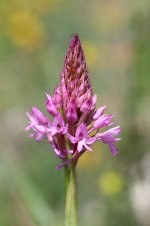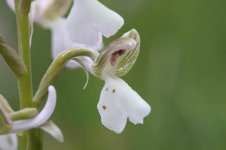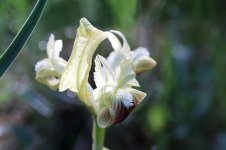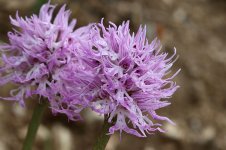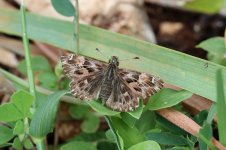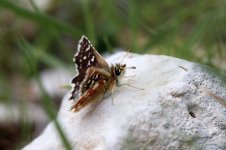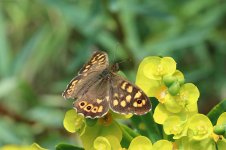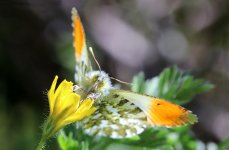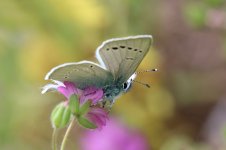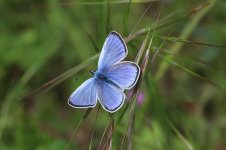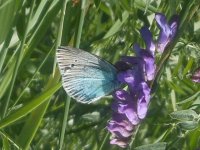11 April. Arrival.
Thanks to a three-hour flight delay, arrived late night. Picked up a rental car, hit the autostrada for the 250 km drive to Foresta di Mercadante. Camped nearby overnight.
12 April. Foresta di Mercadante.
As per forecast, a cloudless sky early morning. Locality one was an area of meadow in the heart of Foresta di Mercadante. After a walk of a kilometre or two through the forest, I arrived at the meadow at about 8.00 am, still too chilly for butterflies, but quite a few Subalpine Warblers singing, plus hundreds of orchids on the steep slopes. As warmth began to build, finally butterflies began to appear - Wall Browns first, then Green-veined Whites, then the first of the day's couple of dozen Green Hairstreaks.
Within an hour, the floodgates had opened, abundant butterflies nectaring across the meadow - Wall Browns, Orange Tips and Green-veined Whites particularly abundant, Small Heaths, Small Whites and, a little later, Brimstones also common. Painted Ladies flying about, plus a couple of Large Tortoiseshells. Walking a track to an adjacent meadow added a Grizzled Skipper and a couple of Brown Argus, plus a loose colony of Swallowtails, at least eight patrolling an area of slope. Also found a few Eastern Dappled Whites among the myriad of whites flying. Overall, a very impressive set of meadows!
Notable among the absentees however was Italian Festoon! I'd had a brief distant glimpse of a flying butterfly that I think was an Italian Festoon, but searching failed to relocate it. And, as midday approached, a worrying block of clouds was beginning to build, blotting out the sun every now and then. If the forecast were to prove correct, my chances to find Italian Festoon might be slipping away!
Thinking it might remain sunny longer on the coast, I decided to relocate to another location some 30 km to the south-east. So, in patchy sunshine, back to the car I trudged. And what should I find there? Right next to my car, one quite resplendent Italian Festoon nectaring on flowers along the forest track!!! What a fantastic butterfly, and what a fantastic concluding experience to this wonderful forest.
So, change of plan again, scrubbed the idea of the relocation and instead drove a mere couple of kilometres to an area of limestone grassland adjacent to Foresta di Mercadante. A very good idea - in a last couple of hours of sunshine, heaps of butterflies on the grassland, and even more along a hedgerow adjacent - including several Large Tortoiseshells and five Nettle-tree Butterflies. Also here, Montagu's Harrier, several Lesser Kestrels and Hoopoe.
Around 2 pm however the cloud did finally kill the day off - no more flying butterflies, so I departed and headed north. Birding at saltpans near Margherita di Savoia produced rather many Slender-billed Gulls and Little Gulls, along with Pygmy Cormorants, Spoonbills and Greater Flamingos, but then it started to rain! Drove up to the hilltop town of Monte Sant Angelo, checked into a hotel, day over.





